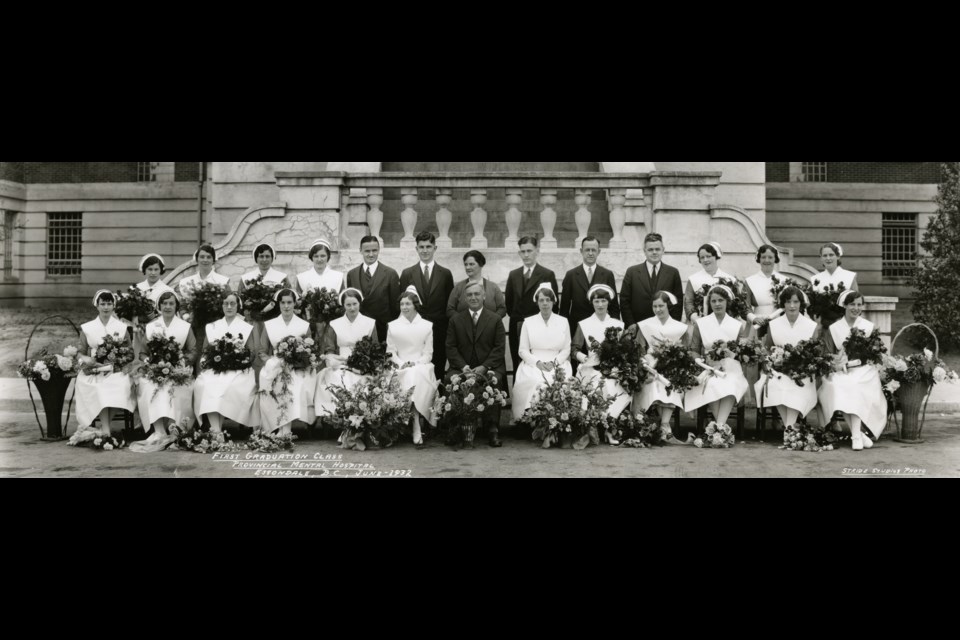The century-long history of Riverview Hospital often focuses on the patients at the mental health institution in Coquitlam, and the treatments administered by doctors.
But little is mentioned about the thousands of nurses who not only undertook their three-year psychiatric training on the campus, but also worked and lived on site.
Andrea Tarnawsky, an assistant archivist with the city, dug into the topic while compiling her online exhibit An Emerging Profession: Psychiatric Nursing at Essondale, 1913-1973; that display, timed to coincide with International Nurses Day and the 200th anniversary of Florence Nightingale’s birth, came out May 12.
During her research, she found “there were still so many interesting stories about the nurses…. There was so much content. The stories jumped right off the pages.”
Her new digital exhibit, titled An Ode to A Nurse in Training: School Life for a Student Psychiatric Nurse, offers the flip side to the Riverview nurses’ daily grind.
The female nurses, who came from around the province to train in Coquitlam, originally lived on the top floor of East Lawn before moving to a residential complex down the hill; more accommodation for the nurses went up around 1940 while the male “attendants” were housed in a separate dorm, located west of West Lawn.
During the week, they worked and received formal training in mental health care including occupational, recreational, insulin shock and electroconvulsive therapies.
However, off shift and on the weekends, the nurses cut loose: They swam in the Coquitlam River, ate ice cream in New Westminster and danced at the Cave Cabaret and the Commodore Ballroom — making sure to return home before their curfew.
There were also social events like teas and banquets, usually at Nurses’ Home 1, as well as dances, skits, radio shows and music recitals. Later, when Pennington Hall opened, the nurses’ social activities moved into the multipurpose recreation facility.
The nurses were also active on the grounds, playing sports and forming clubs.
And, after graduation, many nurses ferried to Victoria for weekend get-aways. For the 1941 class alone, the graduates were treated breakfasts and teas, and three dances at the Hotel Georgia, the Commodore and the Cave in Vancouver.
Their camaraderie and “hijinks” were captured in photos, which were published in yearbooks; some of those images can be viewed as part of Tarnawsky’s exhibit.
“I think it’s really interesting to see what was happening in the Riverview community,” she said. “That’s what archives are about, is preserving the past.”
Tarnawsky said the topic is especially relevant today given the global pandemic. The exhibit “connects us to our past with healthcare. History lives alongside us.”



